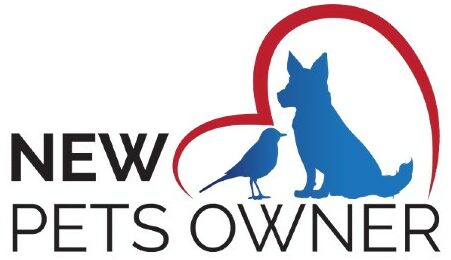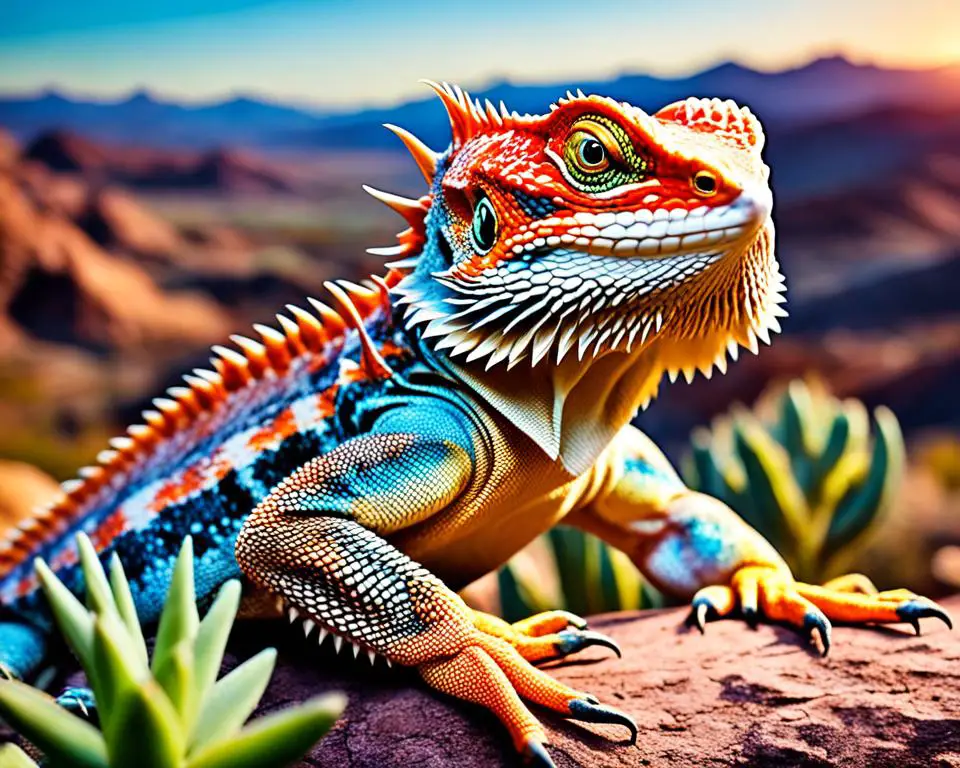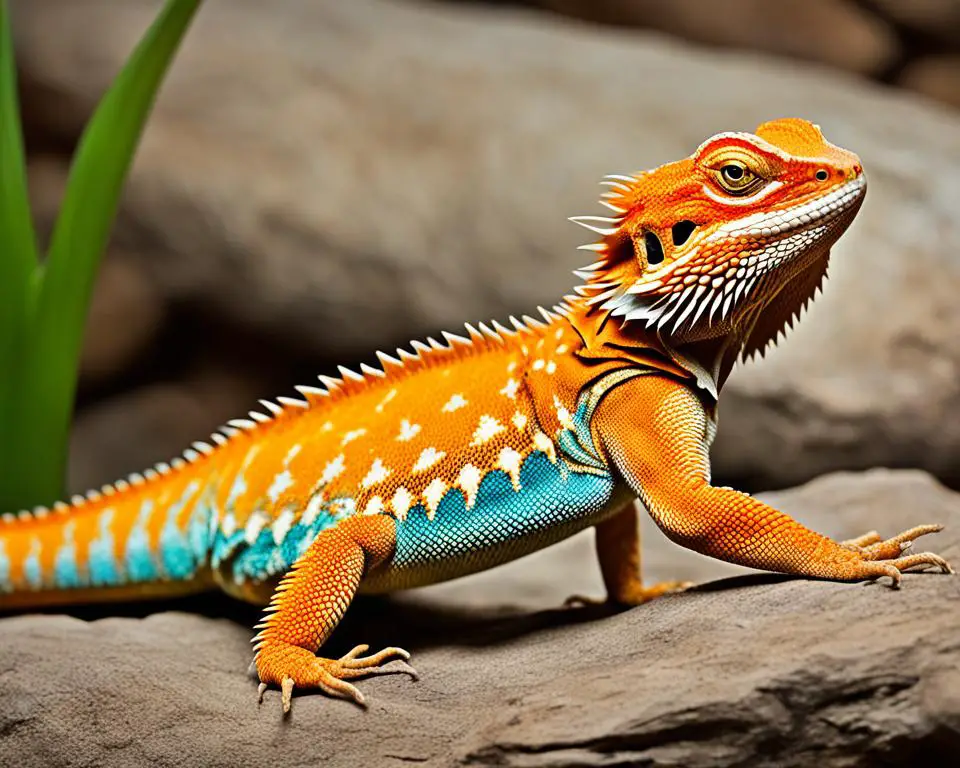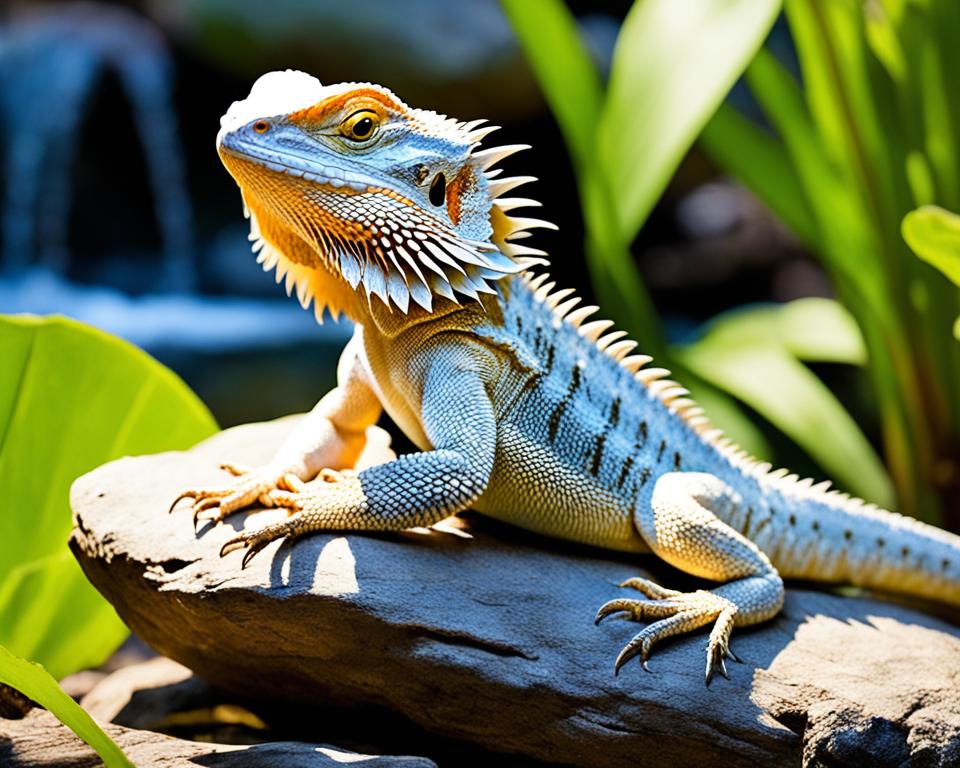Understanding the behavior and temperament of bearded dragons is important for prospective and current owners alike. These reptiles are known for their generally docile nature, but they are capable of biting under certain circumstances.
A bearded dragon bite may occur if the animal feels threatened, is overexcited, or is responding to rough handling.
While establishing a bond based on trust between you and your pet can mitigate biting incidents, it is crucial to recognize that bites are a natural defense mechanism for these creatures.
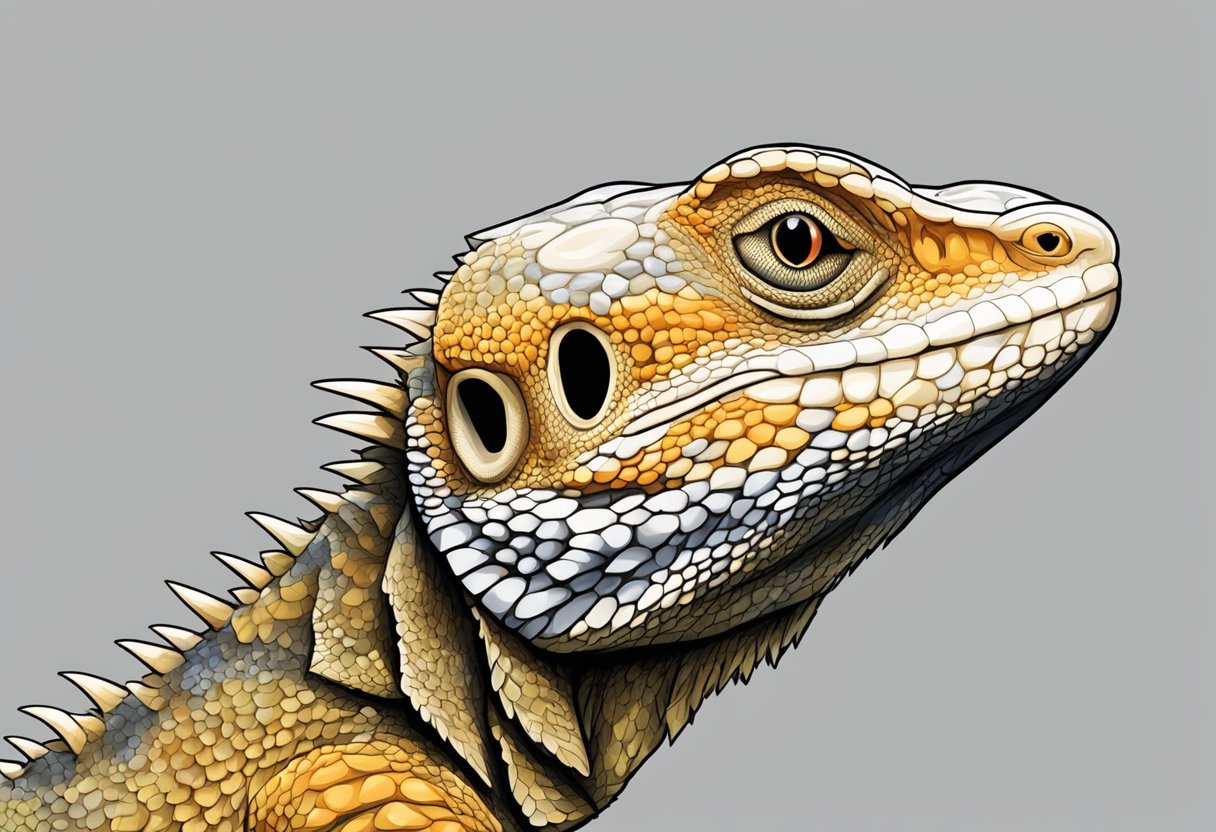
When handling a bearded dragon, you should be aware of the proper technique to minimize stress for the animal and reduce the risk of being bitten. It’s essential to approach your bearded dragon in a calm and non-threatening manner, supporting their body fully to provide a sense of security. If a bite does happen, it’s important to know that while their bites are not typically harmful to humans, proper care and hygiene are necessary to prevent infection.
Key Takeaways
- Bearded dragons generally bite only when stressed or threatened.
- Handling your bearded dragon correctly can build trust and reduce biting incidents.
- If bitten, treat the area with care to prevent infection.
Understanding Bearded Dragon Behavior
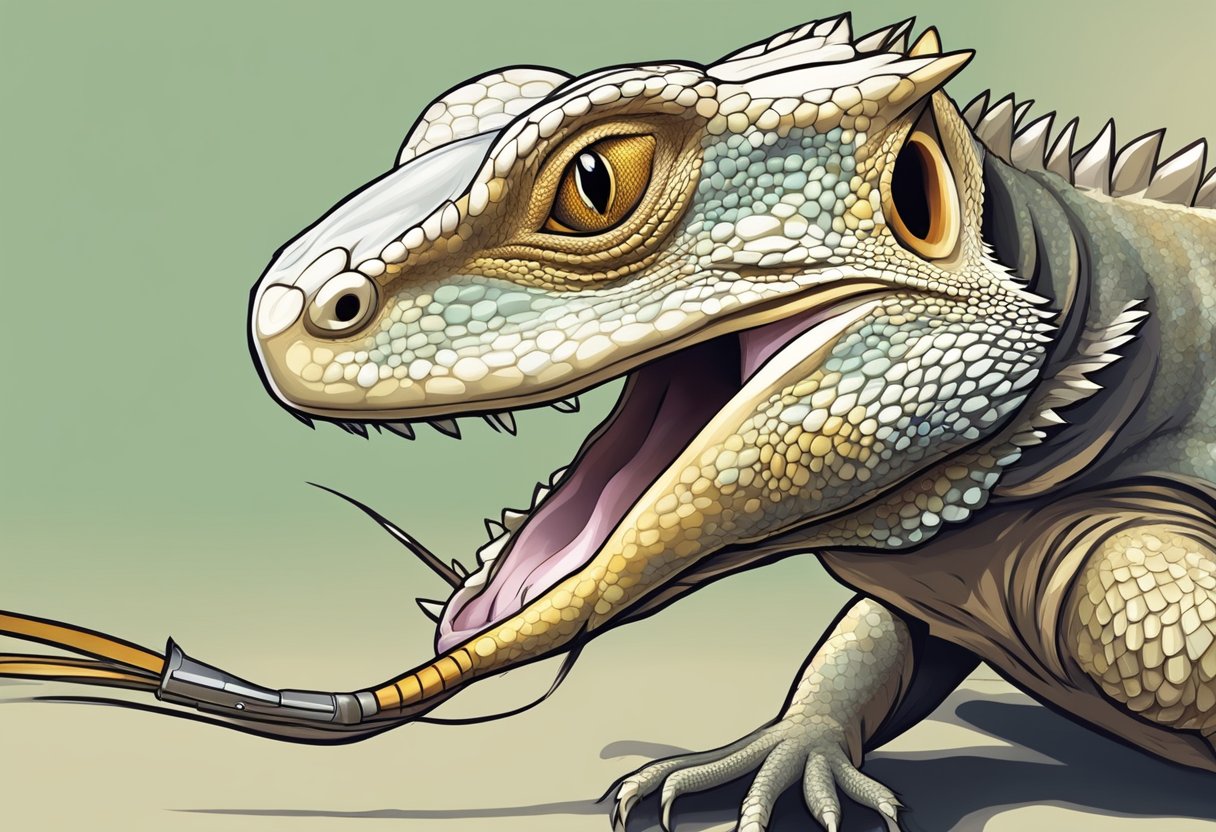
In providing proper care for your bearded dragon, it’s crucial to understand their unique forms of communication and the reasons behind their behaviors, such as biting, to ensure they feel safe and comfortable in their environment.
Communication and Body Language
Bearded dragons exhibit a range of body language cues and behaviors to express their mood and needs. Head bobbing can signify dominance or a greeting, while an arm waive often acts as a submission gesture. When your bearded dragon’s beard turns black, it can indicate stress or preparation for a defensive stance. These visual signals are essential for interpreting your pet’s current state.
Signs of Stress and Aggression
Stress in bearded dragons can lead to aggression and, potentially, biting. Signs your dragon is feeling threatened or stressed include hissing, flattening their body, or puffing up with a black beard. Understanding these signals can prevent mishaps, as a stressed bearded dragon may bite as a defense mechanism. Ensure they have a comfortable habitat and handle them gently to minimize these stress-induced behaviors.
Socialization and Habituation
Socializing your bearded dragon from a young age, especially if acquired from a reputable breeder, fosters trust and can prevent defensive behaviors like biting. Consistent, gentle handling and exposure to humans can help your pet become more socialized, reducing the likelihood of feeling threatened by your presence. Remember, a well-socialized bearded dragon is less likely to misinterpret your actions as hostile, thus displaying less aggression.
Health and Safety Concerns
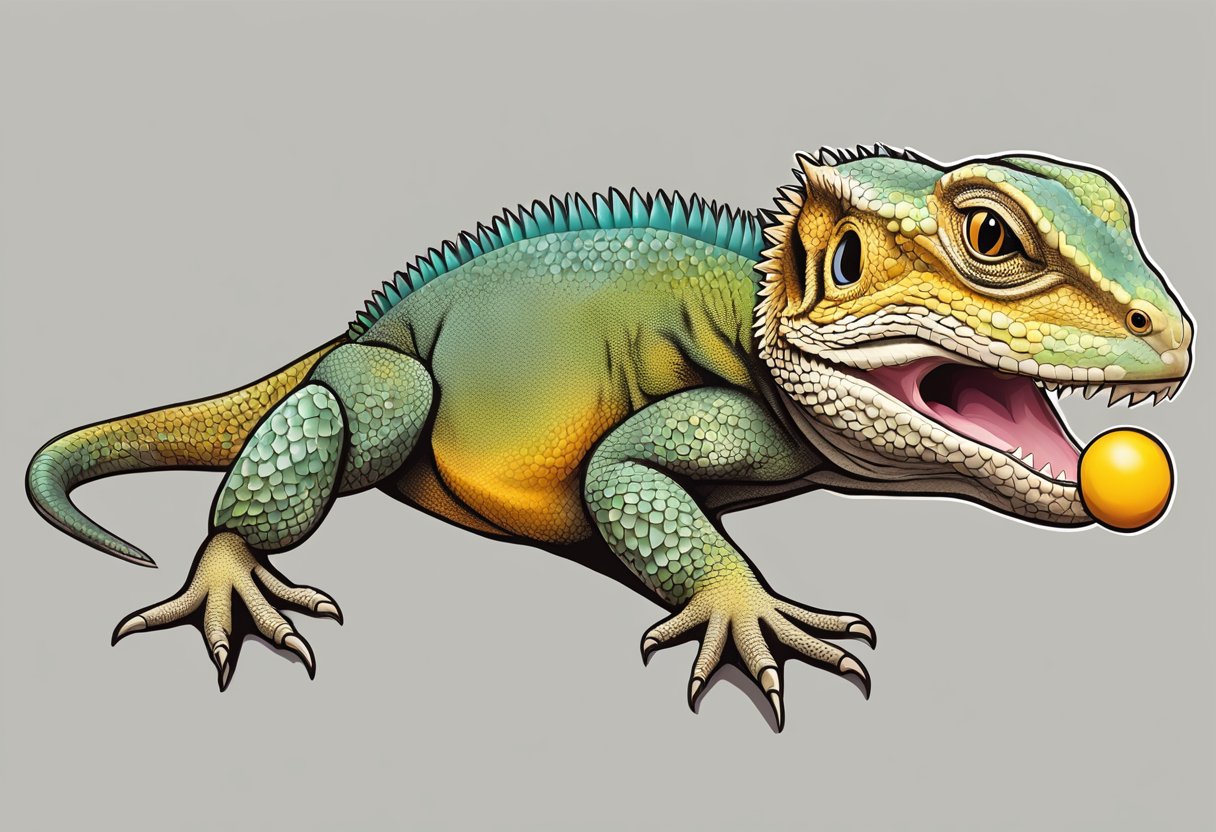
When it comes to bearded dragon bites, understanding the potential health risks and knowing how to handle these reptiles safely is crucial. Bites can lead to infections if not treated properly, and certain precautions can help prevent bites from happening.
Bite-Related Infections
If you receive a bearded dragon bite, it is essential to clean the wound thoroughly because reptiles, including bearded dragons, often carry bacteria like salmonella which can cause infections in humans. Symptoms like redness, swelling, or pus may indicate an infection that requires medical treatment. It’s also wise to ensure your tetanus shot is up to date as a preventative measure against this bacteria.
Safety Precautions During Handling
To minimize the risk of a bite, practice safe and proper handling techniques. Always wash your hands before and after handling to prevent the spread of bacteria. Understand that a stressed or mishandled bearded dragon is more likely to bite, so it’s important to learn and recognize their body language. If bitten, avoid pulling away to prevent further injury and calmly place the bearded dragon back into its enclosure before treating the wound.
Proper Care and Handling of Bearded Dragons
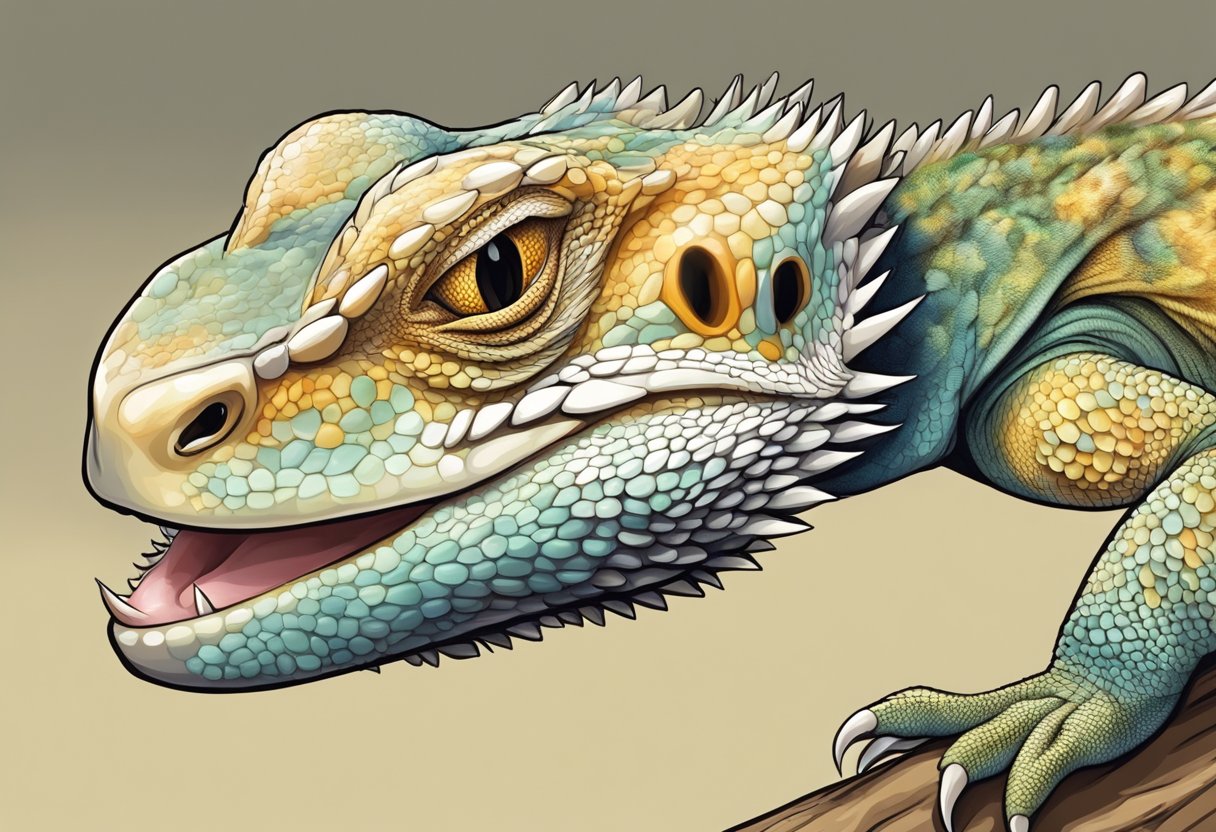
Proper care and handling are paramount for your bearded dragon’s well-being. This ensures that your pet stays comfortable, stress-free, and healthy, minimizing any chances of biting due to discomfort or fear.
Creating a Comfortable Environment
Your bearded dragon’s enclosure is its home and should mimic its natural habitat as closely as possible to keep stress levels low. This means maintaining the correct temperature gradients, offering places to bask and hide, and providing UVB lighting which is crucial for their health and digestion. Regularly cleaning the enclosure is important to prevent the buildup of bacteria and parasites that could cause your pet to become ill and uncomfortable.
Feeding and Nutrition
Feed your bearded dragon a balanced diet that consists of vegetables, fruits, and live insects. Stick to a regular feeding schedule, and be mindful not to overfeed as obesity can be a health issue. Providing the right amount of food can prevent hunger-related nipping. Occasionally, you can offer treats to bond with your pet, but these should not replace their regular diet.
Effective Handling Techniques
When handling your bearded dragon, always approach it calmly to avoid startling it. Gently support its body, avoiding pinching or holding too tightly, which can cause discomfort or provoke a nip. Allow the lizard to adjust and become comfortable with your presence, and it’s less likely to squirm or feel the need to escape. Move smoothly and slowly to stay calm, promoting a sense of safety for your pet.
Building Trust with Your Pet
Gaining your bearded dragon’s trust is a gradual process. Spend time near their enclosure to let them get used to your presence. Begin by lightly petting them when they seem open to interaction, and gradually progress to brief periods of handling, extending the time as they grow more accustomed to you. Consistent, gentle interaction over time is key to developing a strong, trusting bond.
By creating a nurturing environment and handling your bearded dragon with care and respect, you can foster a comfortable relationship that benefits both you and your pet.
Preventing and Managing Bites
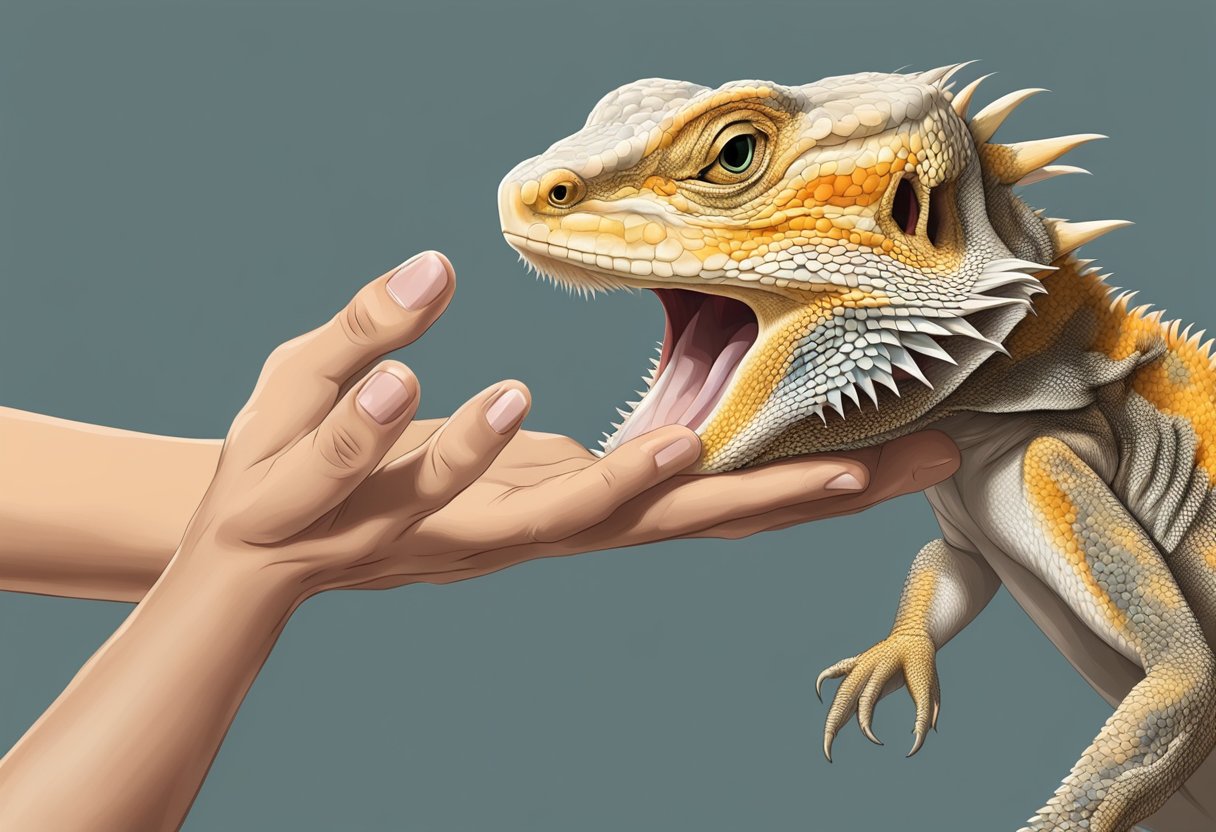
Bearded dragon bites, though typically not venomous, can cause discomfort and may lead to an infection if not treated properly. Successful bite prevention and management hinge on understanding bearded dragon behavior, providing proper care, and knowing how to respond to a bite if it occurs.
Prevention Strategies
Establish a Comfortable Environment: Your bearded dragon’s enclosure should mimic their natural habitat to keep them stress-free. This includes appropriate heat gradients, UV lighting, and hiding spaces.
Regular Feeding:
- Maintain a consistent feeding schedule.
- Provide a nutritionally complete diet to prevent hunger-induced nips.
Handling with Care:
- Approach your lizard calmly and confidently.
- Never grab from above as this mimics a predator’s behavior.
- Support their body fully when picking them up.
Responding to a Bite
Assess the Bite:
- Examine the severity; bearded dragon teeth can inflict shallow punctures or lacerations.
- Assess for any signs of bleeding or wound.
Immediate Treatment:
- Clean the Wound: Rinse the area with mild soap and warm water.
- Disinfect: Apply an antiseptic to any puncture to reduce the risk of infection.
- Professional Care: Seek medical attention if bleeding persists or if there are signs of an infection.
Remember, Bearded dragons are generally docile, and with proper handling and care, biting incidents can be minimized. Your response to any bite should be prompt to prevent further complications.
Frequently Asked Questions
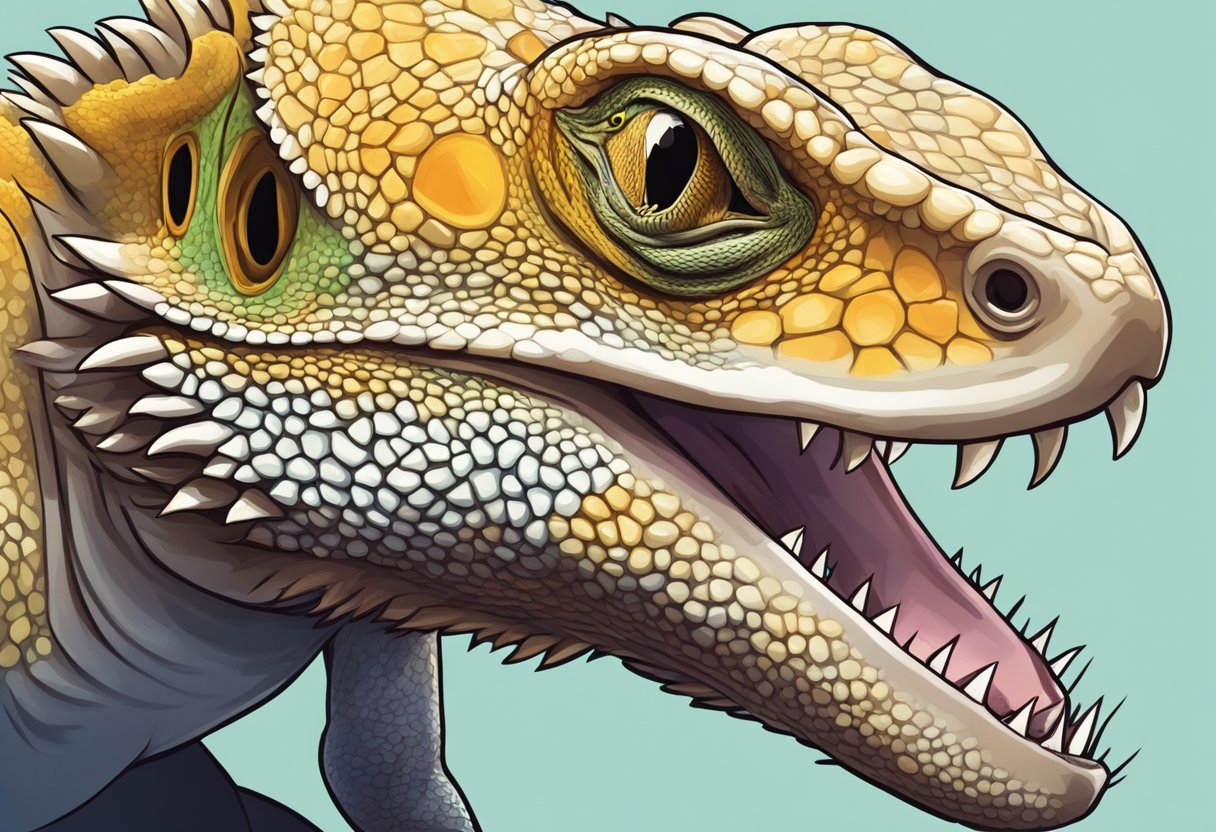
When dealing with a bearded dragon bite, prompt cleaning is crucial to prevent infection. Understanding the potential risks and the force of their bite can help you assess the severity if you get bitten.
How should you treat a bearded dragon bite?
If a bearded dragon bites you, the bite should be immediately washed with soap and water to reduce the risk of infection. It’s advisable to apply a mild antiseptic and cover it with a sterile bandage.
Is there a risk of infection from a bearded dragon bite?
A bearded dragon bite can carry bacteria, including Salmonella. Therefore, there is a risk of infection, especially if the bite is not properly disinfected and cared for. Always ensure good hygiene following a bite.
What is the bite force of a bearded dragon, and could it be dangerous?
Bearded dragons have a relatively low bite force compared to larger reptiles. Although the bite force is not usually dangerous, it can cause discomfort or slight injury depending on the size of the dragon.
What to do if a bearded dragon bite draws blood?
If a bearded dragon bite draws blood, apply pressure with a clean cloth to stop the bleeding. Once the bleeding stops, clean the wound thoroughly and monitor it closely for signs of infection. Seek medical advice if necessary.
Do bearded dragon bites typically cause pain?
A bearded dragon’s bite may cause pain equivalent to a pinch due to their small teeth. The pain level often depends on the individual dragon and the area bitten, but it’s generally not severe.
Can bearded dragons transmit diseases through bites or scratches?
Bearded dragons can transmit diseases such as Salmonella through their bites or scratches, even if they appear clean and healthy. It’s important to practice good hygiene after handling your bearded dragon or sustaining a bite.
